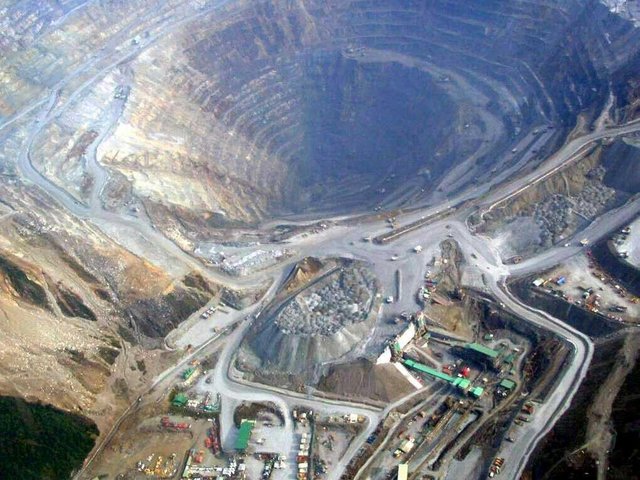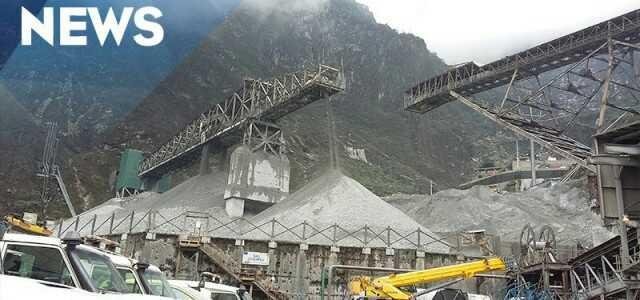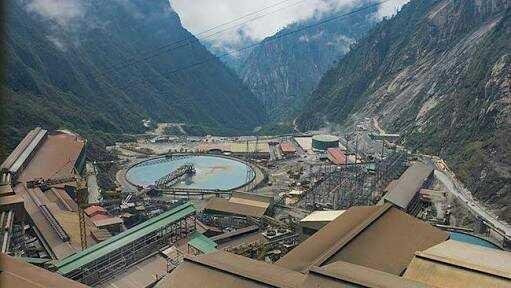The first history of Freeport began in Papua.
The first history of Freeport began in Papua.

lndonesia, a country commonly called the archipelago, a country that lies on the equator. The country is rich in culture, language and diverse ethnicity.

There is no country like this anywhere in the world. And nothing like this country.
However, it seems we forget that there is a gift and a little heaven given by God Almighty for Indonesia.
The little paradise is across the ocean at the eastern tip of Indonesia, a little paradise called papua.
Papua is a rich land, a land of abundance with the produce of its earth, its natural exoticism, and its cultural diversity.
Indeed, so far many people of Indonesia who only know papua through mass media and television media saja.Dan itupun the publicized and the expose is a separatist conflict that occurred far hundreds of kilometers in the interior of papua.
Papua is not as horrible as most people think, not as sensitive as people imagine.
And in fact the separatist movement arose because they felt the lack of justice and always discriminated.It was because their famous land was rich until it spread all over the world, and was not unstoppable again in the areas of mining on their land, after which they did not enjoy the results earth from their land and forget it for granted.
The beginning of PT Freeport Indonesia stands, in fact there is a unique travel story to know. In 1904-1905 a private Dutch company Koninklijke Nederlandsche Aardrijkskundig Genootschap (KNAG), the Geography Institute of the Kingdom of the Netherlands, organized an expedition to West Papua whose main purpose was to visit the Snow Mountain which is said to be in the Land of Papua.
The first record of the snow is from Captain Johan Carstensz who traveled with his two ships Aernem and Pera to the "south" in 1623 in the waters south of the Land of Papua, suddenly deep inland saw the sparkle of snow and recorded in his diary on 16 February 1623 on a "very high" scroll which is covered in parts by snow. -Notes Carsztensz is a ridicule of his friends who think Carstensz only fantasize.
Although the first expedition of the KNAG failed to find the iceberg mentioned in Captain Carstensz's diary, this was the forerunner of the Dutch great concern for the Papuan region. The map of Papua was first made from military expeditions to this area in 1907 to 1915. These military expeditions then aroused the desire of civilian scientists to climb and reach the snow mountains.
Several famous Dutch expeditions led by Drs. HA.Lorentz and Captain A. Franzen Henderschee. All is done with the aim to reach the d top of Wilhelmina (Puncak Sudirman now) at an altitude of 4.750 meters. Lorentz's name was later enshrined for the name of Lorentz National Park in the Asmat tribe region on the south coast.
In the mid-1930s, two Dutch youths Colijn and Dozy, both employees of the NNGPM oil company, were planning their execution to reach the top of Cartensz. Their adventure then became the first step for the opening of mines in Tanah Papua forty years later.
In 1936, Jean Jacques Dozy found Ertsberg's reserve or called ore volcano, then data on these rocks were brought to the Netherlands. After a long time meeting a Jan Van Gruisen - Managing Director of the company Oost Maatchappij, who exploited coal in East Kalimantan and Sulawesi Tengggara with his longtime friend Forbes Wilson, an explorers head at the Freeport Sulfur Company whose main operation was sulfur mining under the base sea. Then Van Gruisen succeeds in convincing Wilson to fund the expedition to the ore mountains and taking rock samples and analyzing them and making judgments
At the beginning of the Soeharto period, the government took a policy to immediately take concrete steps to improve economic development. But with limited national economic conditions after the replacement of power, the government immediately took a strategic step by issuing the Law of Foreign Capital (Act No. 1 of 1967).
Freeport's supreme leader at the time named Langbourne Williams saw an opportunity to continue the Ertsberg project. He met Julius Tahija who at the time of President Soekarno led the Texaco company and continued the meeting with General Ibnu Sutowo, who at that time served as Minister of Mining and Petroleum Indonesia. The core of the meeting was the request for Freeport to continue the Ertsberg project. Finally from the results of a long meeting after a long Freeport get permission from the government to continue the project in 1967. That is Freeport's First Working Contract (KK-I). The contract of work is a promotional material brought by Julius Tahija to introduce Indonesia abroad and its first mission is to promote Foreign Investment Policy to Australia.
Before 1967 the Timika area was a jungle. At the beginning of Freeport's start of operation, many of the initially dispersed populations began to enter the area around the Freeport mine so that population growth in Timika increased. In 1970 the government and Freeport jointly built decent residents' houses on the street of Kamuki. Then also built housing residents in the south of the airport which is now the City of Timika.

In 1971 Freeport built Timika airport and supplies center, then also built main roads as access to mines as well as roads in remote areas as access to villages In 1972, President Soeharto named the city built gradually by Freeport with the name Tembagapura. In 1973 Freeport appointed its chief representative for Indonesia as well as first president of Freeport Indonesia. Ali Budiarjo, a former Secretary of Defense and Director of National Development in the 1950s, the husband of Miriam Budiarjo who also played a part in several Indonesian independence talks, as secretary of the delegation of the Linggarjati Negotiations and members of the delegation in the Renville agreement.